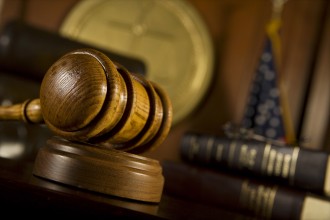
May 29, 2018
The Novelty of an Optical Isomer is not Negated by the Prior Art Disclosure of its Racemate
In UCB, Inc. v. Accord Healthcare, Inc., [2016-2610, 2016-2683, 2016-2685, 2016-2698, 2016-2710, 2017-1001] (May 23 2018), the Federal Circuit affirmed the district court’s determination that UCB’s patents on lacosamide, an anti-epileptic drug, were not invalid for obviousness-type double patenting, obviousness, and anticipation.
On the issue of double patenting, the Federal Circuit noted that in chemical cases, the double patenting inquiry is not whether a person of ordinary skill in the art would select the earlier compound as a lead compound, but rather whether the later compound would have been an obvious or anticipated modification of the earlier compound — the underlying patent in the double patenting analysis need not be prior art to the later claim. The Federal Circuit found that the district court did not err by focusing its double patenting analysis on the claims’ differences, as well as the claims as a whole.
The Federal Circuit said that proving that a claim is invalid for obviousness-type double patenting “requires identifying some reason that would have led a chemist to modify the earlier compound to make the later compound with a reasonable expectation of success. Acknowledging that it was a close case, because it discerned no clear error in the district court’s underlying fact finding that there would have been no reasonable expectation of success in making the modifications needed to make the claimed combination, the Federal Circuit agreed with the district court that the asserted claims of the ‘551 patent were patentably distinct from the ’301 patent.
With respect to obviousness, the Federal Circuit applied a lead compound analysis, rejecting the proposition that the test does not apply in purification cases. The lead compound analysis first determines whether a chemist of ordinary skill would have selected the asserted prior art compounds as lead compounds, or starting points, for further development efforts, and then determines “whether the prior art would have supplied one of ordinary skill in the art with a reason or motivation to modify a lead compound to make the claimed compound with a reasonable expectation of success.
The Federal Circuit found substantial evidence supported the district court’s conclusion that a person of ordinary skill in the art would not have selected either of the proferred lead compounds.
On anticipation, appellants argued that because the prior art disclosed the chemical structure, it necessarily disclosed the R-enantiomer (lacosamide) recited in claim 9 of the ’551 patent. The district court concluded that the prior art disclosed neither the R-enantiomer, nor any of its characteristics. The Federal Circuit noted that the novelty of an optical isomer is not negated by the prior art disclosure of its racemate, and that the references specifically stated that it prepared the racemic amino acid derivatives rather than the individual enantiomers.
Thus, the Federal Circuit found no clear error in the finding of no anticipation.




































